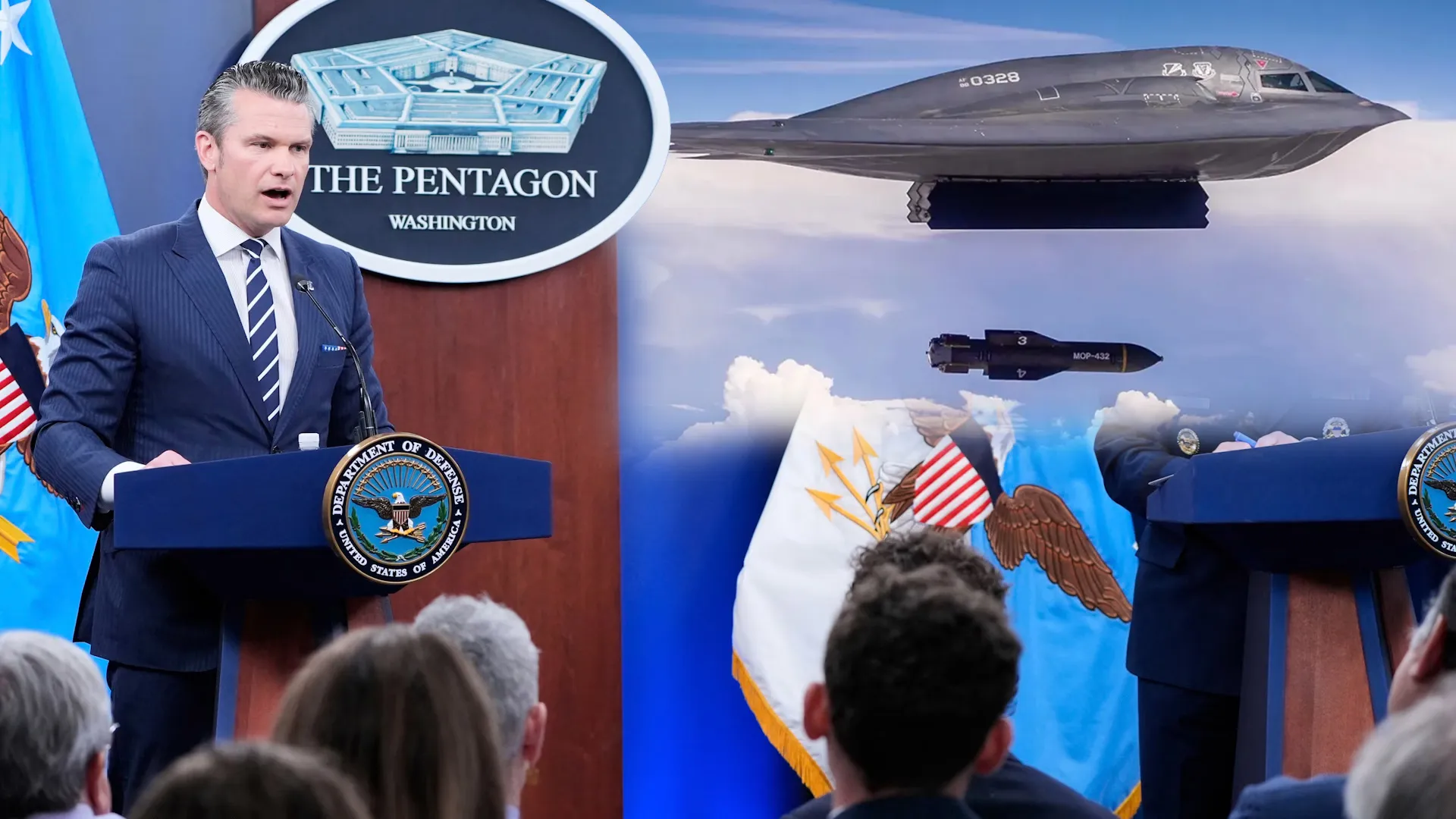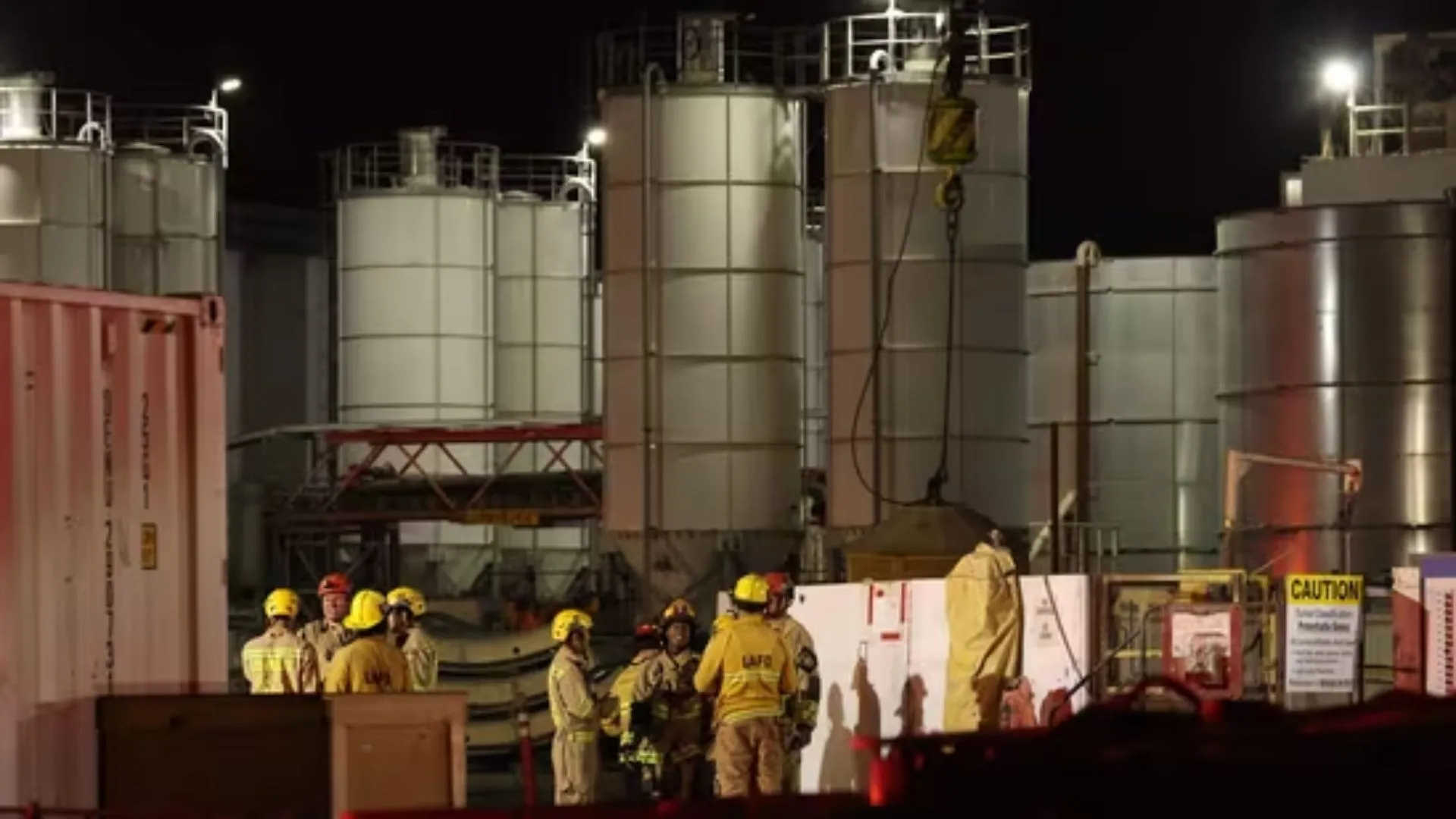The Pentagon has disclosed the specifics of a closely held and coordinated Iranian military operation against Iran’s nuclear facilities. Codenamed Operation Midnight Hammer, the operation was undertaken after President Donald Trump’s two-week limit for Iran had elapsed. The operation targeted three main Iranian nuclear facilities in what the Pentagon termed a calculated, accurate, and worldwide demonstration of US military power.
Mission Details and Tactical Strategy
In a Sunday briefing, the Pentagon confirmed that Operation Midnight Hammer was intended to “severely degrade Iran’s nuclear weapon infrastructure.” US Chairman of the Joint Chiefs of Staff Gen. Dan Caine referred to it as a complex and high-risk mission executed with exceptional skill and discipline by the joint force.”
The attack began at midnight Friday, when a massive B-2 bomber strike package took off from the mainland United States. Officials say the flight schedule and route were deliberately planned to preserve tactical surprise. By the plan, part of the strike package flew west into the Pacific as a decoy move, a secret move that only a few top planners in Washington knew about.
The principal strike force was comprised of seven B-2 bombers, each carrying two crew members. The planes flew east and maintained limited communication before conducting several in-flight refuelings while on the 18-hour flight to the target area.
Precision Execution Over Iranian Airspace
After entering Iranian airspace, the B-2s rendezvoused with escort and support aircraft. This was done through a sophisticated aerial movement that demanded high precision in synchronising between multiple platforms. Pentagon officials pointed to this as a standout demonstration of the US Joint Force’s global coordination ability.
At 5 PM EST, before the bombers reached their targets, a US Navy submarine in the Central Command area launched over two dozen Tomahawk land attack cruise missiles aimed at surface infrastructure targets in Isfahan. These missiles served as a surprise element of the operation.
Deception Tactics and Final Strike
As the bombers were approaching Fordow and Natanz, the US, meanwhile, employed deception maneuvers. Specifically, fourth- and fifth-generation fighter aircraft led the formation at high speeds and altitudes. They effectively cleared the airspace ahead of the bombers. Suppression weapons at high speeds and pre-emptive strikes were used to knock out surface-to-air threats. This ensured that the B-2s could be escorted in safely.
At exactly 6:40 PM EST, the lead B-2 strike aircraft subsequently released GBU-57 Massive Ordnance Penetrator bombs. The primary target was the Fordow. From 6:40 PM EST to 7:05 PM EST, all three recognized nuclear targets were hit, with the last Tomahawk missiles hitting Isfahan.
No shots were fired at the US planes on entry or departure from Iranian airspace, according to the Pentagon. After the weapons were launched, the strike package subsequently exited Iranian airspace safely and began its return to base.






















